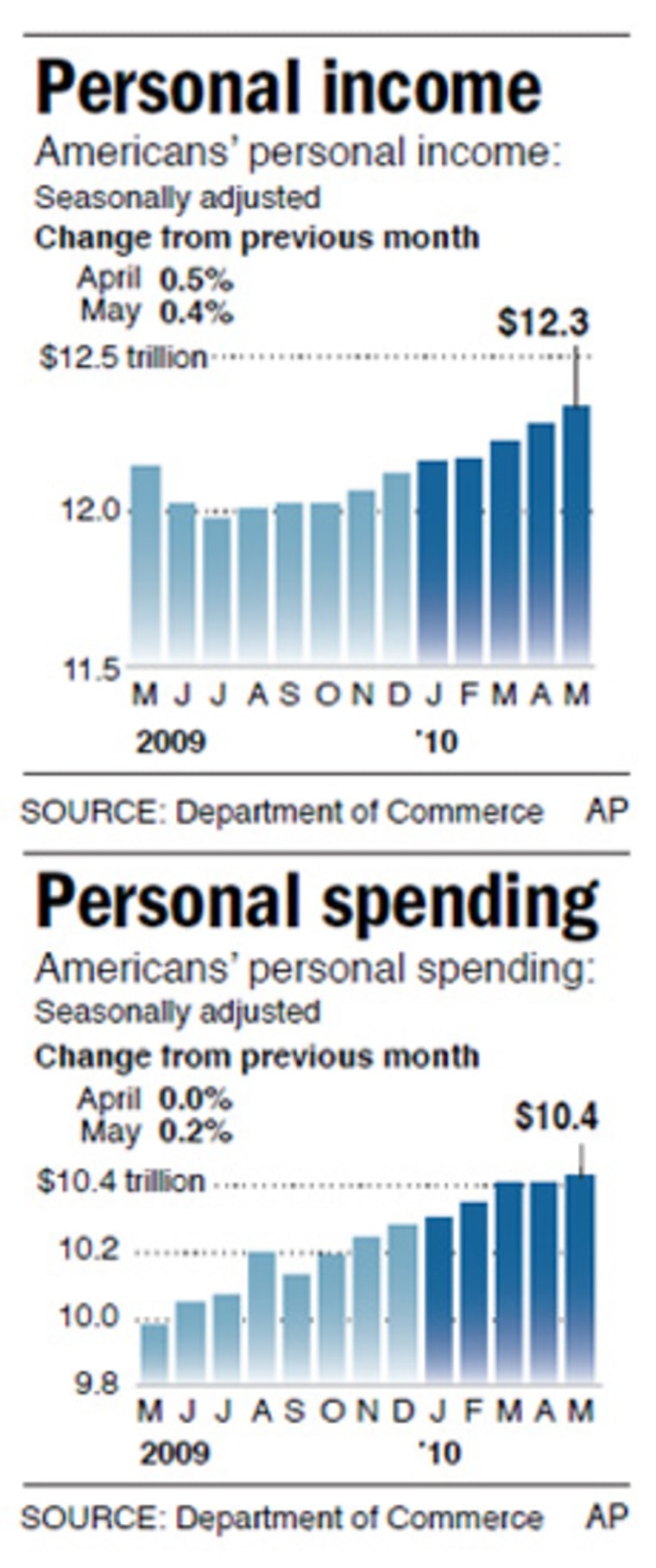Americans spent a little more in May, but not enough to speed along the economic recovery, new data show.
Consumer spending rose 0.2 percent last month after no change in April, the Commerce Department said Monday.
Incomes rose for the sixth time in seven months, boosting household finances and potentially providing fuel for greater future spending.
The increase came from spending on services — much of that likely the result of Americans using more electricity as the weather warmed up. Money spent on goods declined.
Incomes rose 0.4 percent. The savings rate, or the percentage of income that wasn't spent, bumped up to 4 percent.
Consumers "are still not setting this economic recovery alight, but nor are they rolling over in the face of ... high unemployment and lower (stock) prices," Paul Dales, an economist at Capital Economics, wrote in a note to clients.
More cautious spending by Americans is fueling debate over how much of a role government should play in stimulating the economy.
World leaders over the weekend pledged to cut deficits in richer countries in half by 2013.
But as the appetite for federal stimulus fades in the U.S., millions of Americans could lose unemployment benefits and health care subsidies. The Senate remains at an impasse over extensions, with Republicans and one Democrats citing growing deficits as a reason for blocking them.
Consumer spending accounts for about 70 percent of economic activity.

The economy has grown for three straight quarters. Still, consumers are cautious, facing high unemployment, tight credit and a slumping housing market. If consumption remains sluggish, the economy may not grow fast enough to generate jobs and quickly bring down the 9.7 percent unemployment rate.
Investors appeared pleased with report on spending and income. The Dow Jones industrial average rose more than 30 points in midday trading.
Wages and salaries rose 0.5 percent last month, the department said. Paychecks gained from recent increases in the average work week, as well as temporary census hiring.
Employers added 431,000 jobs in May, but the vast majority were temporary census positions. Private employers added only 41,000 jobs. About 250,000 of census jobs are expected to end this month.
Consumers haven't been driving the current recovery. Instead, it has depended more on business spending and exports. In the four quarters following the steep 1981-82 downturn, consumer spending rose by an average of 6.5 percent per quarter. By contrast, even as the economy has grown for the past three quarters, consumer spending rose an average of only 2.5 percent per quarter.
The government said earlier this month that retail sales fell sharply in May, a sign consumers were cutting back.
Department store J.C. Penney Co. and many teen merchants including Abercrombie & Fitch Co. and American Eagle Outfitters Inc. reported declines in revenue at stores open at least a year.
On Friday, the government said the economy grew at a 2.7 percent annual rate in the January-to-March quarter, lower than previously estimated. Consumer spending increased 3 percent, a decent pace, but below an earlier estimate of 3.5 percent.
Many analysts expect the economy will grow at about 3 percent in the current quarter. Still, some worry growth may slow in the second half of the year as the impact of government stimulus efforts fades.